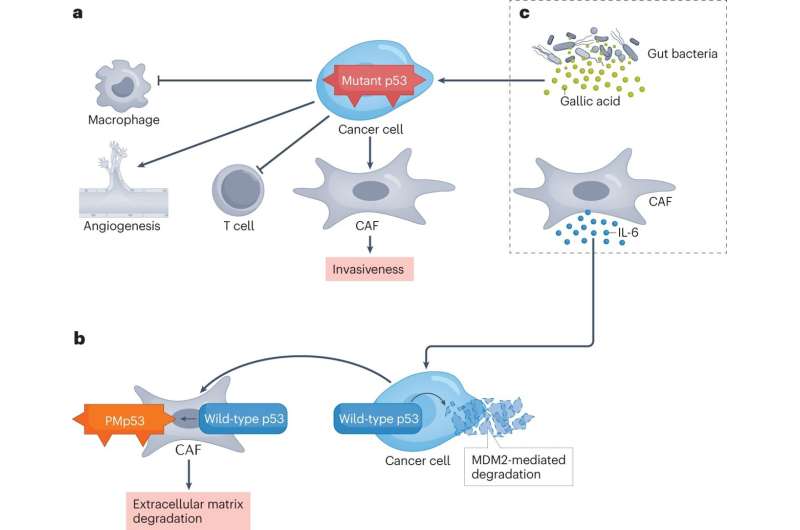Complex interplay between TP53-mutant cancer cells and their microenvironment. Credit: Nature Reviews Clinical Oncology (2023). DOI: 10.1038/s41571-023-00842-2
The p53 tumor suppressor protein is encoded by TP53, the most frequently mutated gene in cancer. A review article published in Nature Reviews Clinical Oncology by Professor Klas G Wiman and colleagues at the Department of Oncology–Pathology describes how p53 could be used as a target for new cancer therapies.
In TP53 wild-type cancer cells, p53 is often inhibited by overexpression of the p53 antagonist MDM2, and agents that disrupt p53-MDM2 binding can restore p53 activity. In TP53-mutant cancer cells, refolding of missense mutant p53 or translational readthrough of nonsense mutant TP53 can reactivate p53 function.
Several p53-targeted compounds are currently being tested in clinical trials in patients with different types of malignancies, but thus far no such drug has been approved in the clinic. In this review, Wiman and colleagues discuss the complex interactions between p53 and its microenvironment and suggest strategies for enhancing clinical efficacy of p53-targeted agents.
More information: Amos Tuval et al, Pharmacological reactivation of p53 in the era of precision anticancer medicine, Nature Reviews Clinical Oncology (2023). DOI: 10.1038/s41571-023-00842-2
Provided by Karolinska Institutet
























